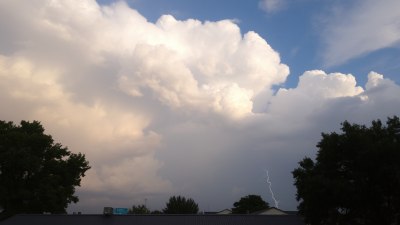When It’s Too Cold to Function but Too Warm to Complain
Discover coping strategies for dealing with fluctuating temperatures and how to stay comfortable.

This image was created with the assistance of Freepik
When it comes to winter, many individuals experience an internal battle between the intense cold outside and the varying temperatures indoors. It often feels like a confusing duality where nature's chilliness can linger long enough to make one feel incapacitated, while the warmth indoors lulls you into a false sense of comfort. Ultimately, understanding how to navigate these temperature extremes becomes essential for maintaining a sense of normalcy and productivity in your daily life.
The Psychological Effects of Extreme Temperatures
Extremely cold temperatures can significantly impact your mental health. Research indicates that colder climates often correlate with higher rates of Seasonal Affective Disorder (SAD), which is triggered by the lack of sunlight during winter months. People may feel lethargic, irritable, or sad, thus making it difficult to function effectively. Conversely, when indoors, the heat may induce a sense of complacency, where you are too warm to complain yet cannot seem to do much either. Understanding the psychological impact of temperature fluctuations is the first step in managing your mood and productivity.
Coping Mechanisms for Cold Weather
When you find yourself battling the cold, layering clothing is one of the most effective coping mechanisms. It's essential to wear thermal wear as your base layer, which retains heat while wicking away moisture. A good middle layer, like fleece, helps trap body heat, and a waterproof outer layer keeps wind and moisture at bay. Additionally, accessories such as scarves, hats, and gloves play a crucial role in staying warm. The extremities of your body lose heat quickly, so keeping your head and hands protected can prevent significant heat loss.
How to Stay Productive When Warm Indoors
Staying productive when it’s too warm can prove to be a challenge. The first thing is to assess your surroundings. Ensure proper ventilation by opening windows or using fans to cool the space down. You can also benefit from setting a specific task list to keep you focused. When it’s too warm to complain, it’s also the perfect time to take short breaks to regain energy. A burst of activity, even light stretching, can help your body reset before diving back into work.
The Science Behind Temperature Regulation
Your body has its own internal thermostat, known as the hypothalamus, which regulates temperature based on external conditions. Factors like age, body composition, and hydration levels play vital roles in how well you adjust to temperature changes. Understanding your body’s innate response to heat and cold can inform how you prepare for different environments. Remember, staying hydrated is key during both hot and cold conditions, so keep water handy at all times!
Adapting Your Home Environment
Being proactive about your living space can mitigate some of the discomfort caused by fluctuating temperatures. For colder months, consider improving insulation, using thermal curtains, or adding area rugs to help retain heat. For warmer periods, blackout curtains can keep spaces cooler, and strategic use of fans can promote better air circulation. Additionally, keeping your living environment organized can alleviate stress, making it easier to think clearly, no matter the temperature outside.
Using Technology to Combat Temperature Extremes
Modern technology offers various solutions to combat the discomfort of extreme temperatures. Smart thermostats allow you to program your heating and cooling systems to adjust automatically based on your needs and preferences. Wearable devices can monitor your body temperature and heart rate, providing insights into how your body responds during cold or warm conditions. Furthermore, there are many apps designed to help you track weather fluctuations and plan your day accordingly.
Nutrition's Role in Temperature Regulation
What you eat can significantly impact how your body responds to temperature changes. In colder climates, consuming warm meals with proteins and healthy fats can help regulate your body temperature. Foods rich in omega-3 fatty acids improve circulation, which is essential for maintaining warmth. During warmer periods, light meals, especially those with fresh fruits and vegetables, can help you cool down and stay energized. Understanding how nutrition plays a role in temperature management adds another layer to your coping strategies.
Exercise: A Natural Thermostat
Engaging in physical activity can effectively help regulate body temperature. During cold weather, exercise increases blood circulation, which promotes warmth throughout the body. In warmer weather, movement encourages perspiration, leading to efficient body cooling. Aim for dynamic forms of exercise, such as cycling or interval running, which can improve cardiovascular health, benefiting your body’s ability to adapt to temperature changes.
Social Interactions Amid Temperature Changes
Social circumstances often shift with the seasons. During colder months, people tend to stay indoors, which can become isolating. It’s helpful to maintain a support system via social interactions, whether through virtual means or cozy gatherings around warm drinks. In warmer periods, consider arranging outdoor activities to enjoy the climate while also bonding with friends. Social engagement plays a vital role in mental health, helping combat feelings of lethargy or irritability caused by temperature challenges.
Mindfulness and Temperature Awareness
Practicing mindfulness can help you become more attuned to how temperature affects your mood and functioning. Understanding your comfort levels allows you to react proactively. Engage in mindfulness exercises such as meditation or focused breathing to center yourself amidst rising heat or chilling cold. Developing a heightened awareness of your emotional and physical needs leads to healthier responses to your environment.
Creating a Personal Comfort Zone
Ultimately, each individual must create their personal comfort zone by combining the insights gathered from their experiences with temperature extremes. Tailoring your outfit, meals, and living conditions all contribute to a more relaxed state. Embrace the learning journey of discovering what works best for you, allowing flexibility when seasonal transitions occur. Find joy in the little adjustments and enhancements to your daily routine that make dealing with temperature fluctuations a little bit more manageable.
Wrapping Up
Navigating the duality of cold and warmth presents challenges; however, with proper understanding and techniques, you can manage temperature extremes effectively. Recognizing the psychological impact of cold, assessing your coping strategies, and creating a personalized comfort zone contribute to your overall health and productivity. Take proactive steps to embrace the changing seasons, knowing you can maintain functionality and well-being no matter how the temperature shifts outside.











